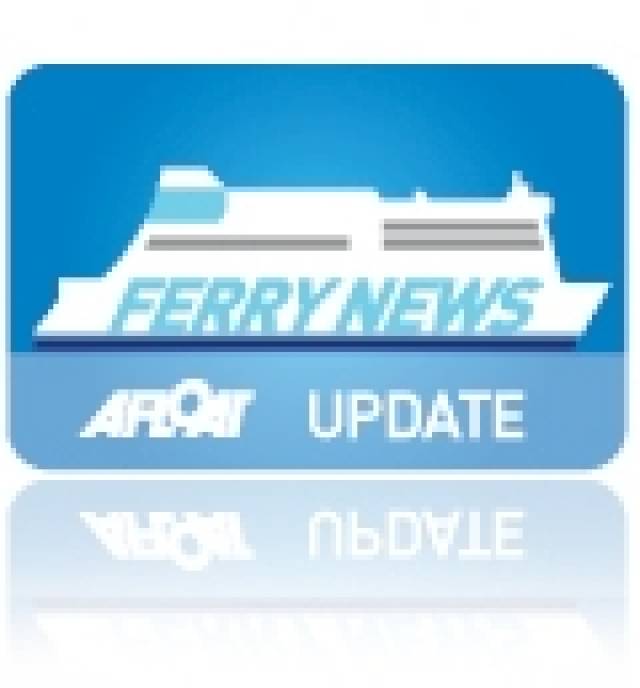Manannan's chequered career included a five year charter initially to the United States Navy but transferred to the United States Army Forces between 2001-2006. The 5,029grt craft (see photo) was used for various trials and demonstrations and in which saw service in the Persian Gulf in support of 'Operation Iraqi Freedom' and in 2003 'Operation Enduring Freedom' in the Horn of Africa.
An engine plant of 4 x Caterpillars diesel generates a speed of over 40 knots / 46 mph which provided logistical solutions by the High-Speed Vessel (HSV) to transport troops and supplies covering long distances in support of the Combined Joint Task Force.
Other tasks required by the force included the roles of operating as a mobile command centre which entailed working closely inshore and operating as a helicopter carrier. Helicopters landed at the craft's stern positioned helicopter landing deck.
The military role of the craft is in stark contrast compared to when the 96m ferry was launched in 1998 for civilian purposes as the Incat 050, the number representing the number of pioneering wave-piercing craft built by InCat in Hobart, Tasmania.
Asides her military days the 800-passenger / 200 vehicle fast-ferry has served the Hobart-Melbourne route, between New Zealand's north and south island and in European waters in the Mediterrean and to the Canary Islands.
Manannan (see photo) entered service last May after the Isle of Man Steam Packet Company (IOMSPco) purchased the vessel which was laid-up in Hobart. She made the long delivery to the northern hemisphere and was re-converted for ferry usesage during a refit in Portsmouth.
The 181 year-old company is the only sea-based passenger operator to the island on services linking Dublin, Belfast, Heysham, Liverpool and (Birkenhead) in the winter months.
There are rival companies such as the Ramsey Steamship Company but they are freight-only operators mostly running to Belfast and Liverpool using short-sea coastal traders and to other small Irish Sea ports.
An annual round island cruise is held and like last year the Manannan will be serving the cruise on Sunday 1 May departing Douglas at 11am for a journey of around 2 hours. The route closely circumnavigates the spectacular Manx coastline. For information on the island cruise and fares click here.
































































